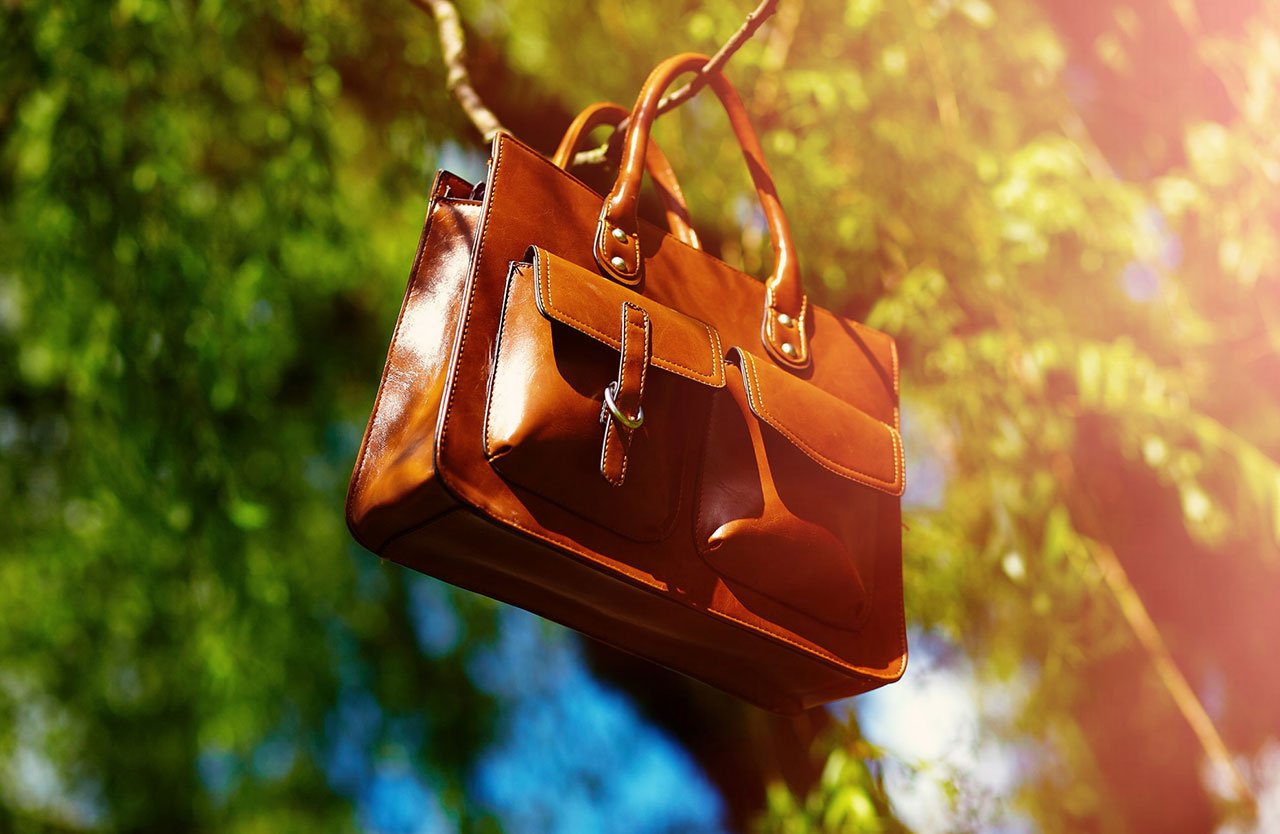Table of Contents
TogglePolished grain, discreet stitching and the soft aroma of a good tannage give a fine leather bag its appeal. Cared for sensibly, such a piece should accompany years of commuting, week-end travel and café tables, growing character rather than scars. Yet countless bags look tired or—even worse—develop mildew long before their prime. The fault rarely lies with the workshop; far more often an eager owner follows the wrong “helpful” hint picked up online. Below are five persistent myths, the harm they cause, and simple habits that will help your favourite bag serve for the long haul.
Sealing the bag in plastic keeps it safe
Leather remains, in essence, skin, complete with pores that need a gentle exchange of air. Slip a bag into a carrier or freezer pouch and the lightest trace of humidity turns into a miniature weather system. Condensation forms, mould flourishes and a stale odour settles in. Once spores take hold they bite deep, leaving grey or green blooms no amount of buffing will disguise. Plastic traps heat as well, hastening the breakdown of adhesives used in linings and edging. A cotton dust-bag, an old pillow-case or even a breathable fabric tote is kinder protection, and a little acid-free tissue inside helps the piece keep its shape while it rests. Keep the parcel on a shelf, not the floor, and allow a gap between neighbouring bags so air can circulate.
Olive oil is a miracle conditioner
Kitchen staples drift into every corner of social media, and olive oil is marketed as the cure for scratches, dryness and dullness. The reality is less idyllic. Oil spreads unevenly, darkening random patches, and as it oxidises it becomes sticky and eventually rancid. That sour scent migrates to the lining and is almost impossible to banish. Worse still, surplus oil draws existing lubricants out of the fibres beneath, so a bag may feel supple one week and brittle the next. Conditioners purpose-made for leather match the hide’s pH, contain antioxidants and emulsifiers, and nourish without leaving a greasy bloom. Test any product on an inconspicuous patch, wait a full day, then treat the whole bag sparingly—twice a year is enough for most items carried in ordinary weather.
A quick swipe with baby wipes is harmless
Baby wipes feel gentle on human skin, yet many contain alcohol, fragrance and alkaline soaps. Leather prefers a mildly acidic environment; disturb that balance and the fibres lose flexibility, leading to flaking and eventual cracking. Silicone added for a “silky feel” leaves a shiny film that grabs dust and speeds up colour change under strong light. If a spill occurs, reach for a barely damp cotton cloth, blot rather than rub, and follow with a pH-balanced cleaner designed for leather. Allow the piece to dry naturally, away from radiators or hair-dryers, and apply a modest coat of conditioner only when the surface begins to look slightly matte.
Frequent saddle-soap sessions keep leather spotless
Saddle soap lives up to its name: it was created for tack that endures sweat, rain and mud. The soap’s strength lifts grime but also strips the oils that let leather flex instead of fracture. A weekly scrub on an office satchel is the textile equivalent of washing cashmere with household bleach. The surface may look pristine for a while, yet hidden dryness leaves it brittle; fine cracks appear first at handles and corners. Reserve saddle soap for genuine emergencies or a deep clean once, perhaps twice, a year. Work up a light lather, avoid soaking seams, rinse with a barely damp cloth, and follow immediately with a nourishing balm. Day-to-day dust usually yields to a soft brush or a lightly moistened microfibre cloth.
Hair-spray and other aerosols are clever stain-removers
Short video clips often show biro marks vanishing under a blast of hair-spray. What the clips omit is the aftermath. Propellants and alcohol dissolve the finish, wick out moisture and leave a brittle surface that splits on the next bend. Polymers intended to hold hairstyles in place create a fragile lacquer that flakes within days. Specialist ink removers and protective sprays exist, and any stubborn stain is best handled by a restorer who can match dyes and topcoats. For routine weatherproofing, choose a water-repellent mist built for ted baker large icon bag, apply in light layers and refresh it when water no longer beads on the surface. Looking after leather is less about elaborate rituals than about steady, respectful habits: keep the ted baker bags clean but not scrubbed raw, nourished yet never greasy, and always given space to breathe. Resist the lure of cupboard cures and viral hacks; trust instead the measured guidance of makers and restorers whose craft depends on healthy hides. Treat your ted baker handbag as a travelling companion rather than a consumable and the partnership should outlast the trend that first tempted you to buy it.

